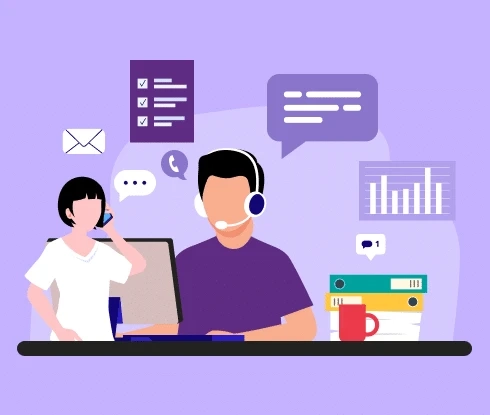In recent years, the secret of success lies with people who know how to sift through data and use them appropriately. So it is no wonder businesses now look to use these treasure troves to improve their productivity.
Businesses now seek new ways to make more money by using the value that dwells in big data and real-time analytics. Irrespective, real-time data analytics have given modern businesses the edge over their competitors.
Real-time data analytics has proven to be the wealthiest hotbed of data today. Analysts use it to make sense of constantly changing data. So as data strive to outpace the traditional batch-based analysis, real-time analysis happens on the go.

Call analytic tools also capture data that reveal hidden insights. For example, it captures and analyzes customer interaction across all channels of the multichannel experience.
So, if you aim to leverage real-time analytics for your business, this article defines all the essential aspects you need to know.
What is Real-time Call analytics?
Real-time call analysis uses Natural Language Processing, sentiment tools, and other AI techniques to highlight keywords in calls. Then, it recommends actions for the agent during the call and explains why the steps should be taken.
In all, real-time analytics help organizations and agents to study ongoing customer calls. They provide insights and reasons for it while the customer is on the line.
This helps businesses know how well an agent handles calls and if the standard procedures are followed.
In addition, if an agent encounters a problem over the call, relevant customer information is automatically displayed with the needed guidance. This will enable agents to address customers’ needs more appropriately to ensure a better experience.
The growth of speech analytics has traced its origins to the speech technology of the 1950s. However, modern tools can do more than recognize spoken phrases; they can analyze tone sentiments. Furthermore, they guarantee speedy information delivery, so there is no conversation gap.

Why do you need real-time call analytics?
Initially, businesses rely on post-call analytic tools which deliver reports after the call has expired. Now, there are real-time analytical tools that give live monitoring of calls.
If you are still reluctant about opting for a real-time call analytic tool, here are some reasons to help you change your mind:
Real-time call monitoring:
As simple as that may sound, the benefit it holds is invaluable. The software helps you monitor live conversations between your agents and the customers.
The software will relay a monitoring interface from which supervisors can have a paranomic view of how each call is going on.
Software like PBXPlus has a real-time transcription feature. This will enable supervisors to read through the transcript of conversations without needing to listen in.
Furthermore, the tool also guides the sentiment of the conversation, so you can know if the call left a positive or negative impression on the customer.
On-call coaching and assistance:
This feature helps your agents give the best possible service to your customers. The software keeps your agent from struggling about what to say by providing real-time direction. PBXPlus can also monitor the speech of your agent to ease communication. So, if your agent is talking too fast or too slow, the software helps him adjust appropriately.
With Voice Intelligence Technology, PBXPlus monitors keywords to trigger pop-ups at points during the conversation. This is to help agents talk about different topics at once without mincing words or stumbling on the wrong sentence.
Post call analytics:
Real-time call analytics software keeps track of live calls and provides post-call insights. This will give you a review of how your agent did over the call. You will also know if your customer’s request was adequately addressed.
Also, post-call analytics lets you monitor the trend of customer calls. You will know the common queries customers put forward so that you can address the underlying issue appropriately. PBXPlus allows you to track specific keywords and phrases over time using the custom tab.
Improves customer experience:
Real-time call analytic software lets you quickly solve all your customers’ queries. Then, when your agents consistently know the right thing to say, customers will feel satisfied after each call.
In some instances, the tools work in a predictive capacity by using hints to guess what the customer will say next. This will leave your agents better prepared for any difficult question the customers might ask.
Customers expect to be treated well. With the help of a real-time call analytic tool, you can easily keep them happy.

Easy transition for new agents:
Real-time call analytic software will help you ease the transition of new agents into the fold. With minimal training, the software guides them on what to say and what next to do.
So, you need not spend money and time training new call agents, and the software helps them learn on the job.
Help mitigate and manage risk:
The software scores each call against the compliance criteria of the organization or the government. With each call being monitored and recorded, there is little chance of making any compliance breaches.
Hence, using the software will let your team focus on low-quality calls. Also, it will help you to improve the training procedure of your new employees.
Use the right software:
At this age, you do not need to track every conversation and touchpoint of your call center manually. It is both archaic and complicated. Integrating the right software into your call center will save you valuable time and resources.
PBXPlus has a wealth of features to help you improve your decision-making. Which include:
A customized call analytic dashboard to better understand your customers.
Call reports to understand your customers and call flow process better
Call tracking
Call logs
Virtual phone numbers
IVR system
Text to Speech
Get started today now..!



